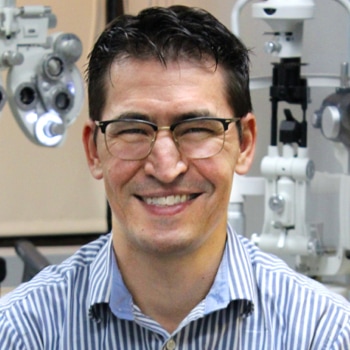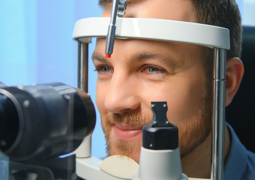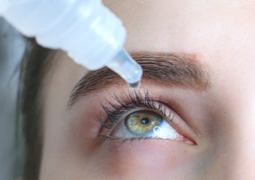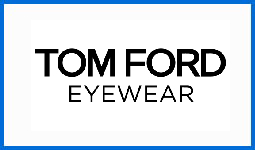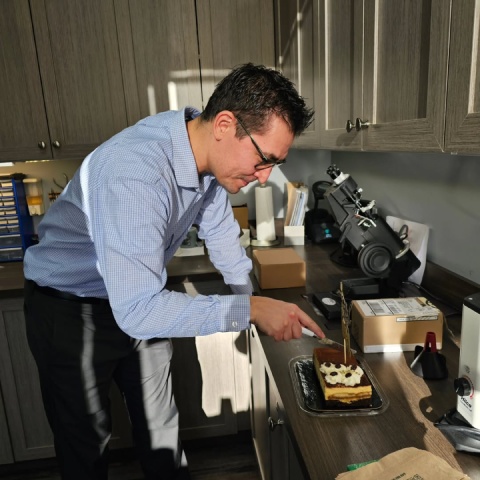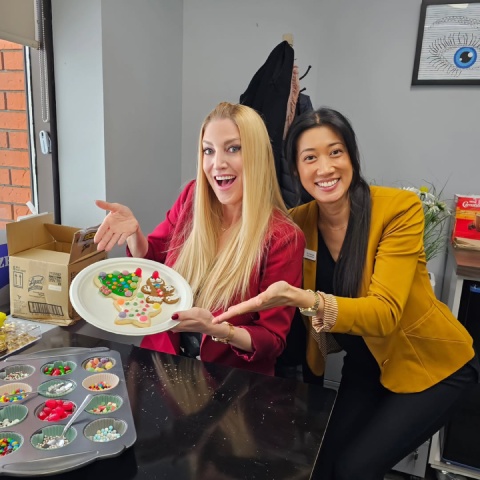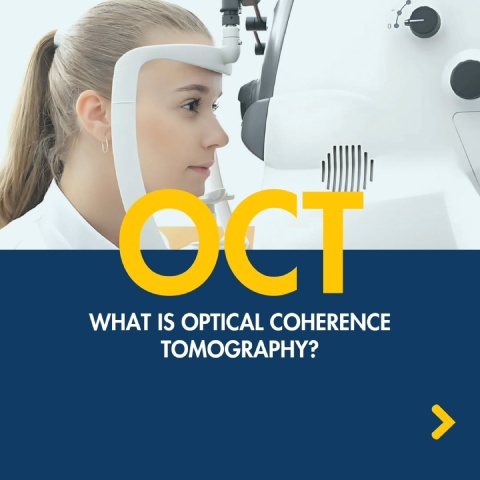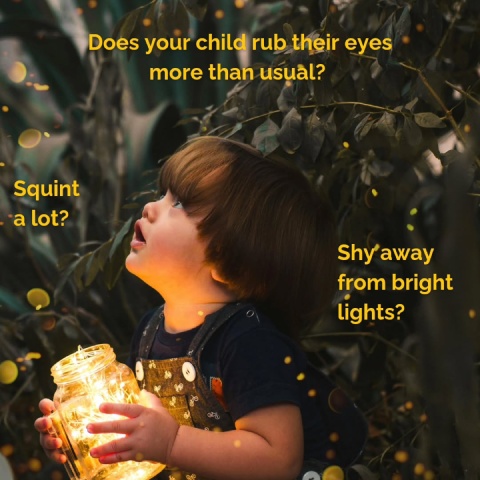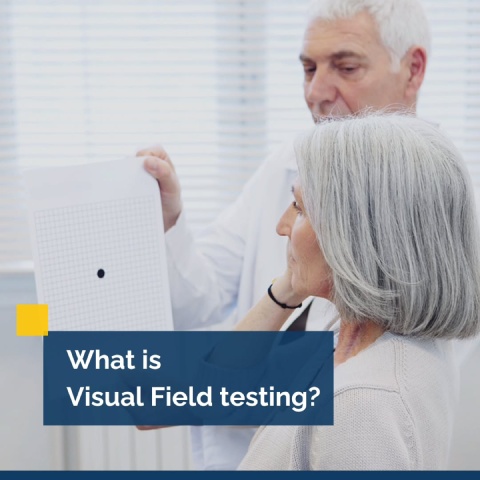Children rely on their eyesight to learn, explore, develop, and grow. A child’s eyes change rapidly as they age, which is why experts recommend regular eye exams for growing kids.
But what happens during a kid’s eye exam? Simply put, an eye professional will go through a series of tests to ensure your child’s eyes and vision are developing normally.
There has to be more to it than that, you say. Of course there is! A pediatric eye exam is an important part of ocular health care, and both you and your child should know exactly what to expect when you come in.
The Importance of a Regular Eye Exam
Preventive care is essential in protecting your child’s eyes. It means catching problems before they become bigger issues. If caught early enough, some vision problems (like nearsightedness) can be slowed or stopped from progressing with proper management plans.
Sometimes a learning issue can be traced back to a vision problem. Proper eye health will help set your children up for success in learning as well as participation in extracurricular activities.
It’s not as simple as a single eye exam either. Because kids’ eyes are always changing, new issues can pop up quickly. If that happens, your eye doctor can help you and your child develop a plan that best suits your child’s eye and vision needs.
When Should You Schedule an Exam?
The Canadian Association of Optometrists suggests the following schedule for growing children:
- The first eye exam should be between 6–9 months old
- One exam between 2–5 years old
- Annual exams from 6–19 years old
Some factors can affect how frequently your child should see an eye doctor, such as ongoing eye or medical conditions. And if you or your child notice vision issues between regular eye exams, you should contact your optometrist as soon as possible.
Vision Screenings vs. Eye Exams
Some schools provide vision screenings for their students. A vision screening tests visual acuity (how well your child can see up close and far away) by having them read the letters on a Snellen chart.
Vision screenings, however, are not a substitute for an eye exam.
Visiting the eye doctor for a comprehensive pediatric eye exam provides an in-depth assessment of your child’s vision and overall eye health. With the use of innovative technology and techniques, eye exams can detect issues that can easily be missed during a vision screening.
Preparing for the Eye Exam
Come to your child’s eye exam prepared to answer a few questions about their eye habits and history of vision issues in the family, such as near or farsightedness, because our vision is partially determined by genetics.
For children old enough to understand what’s going on, it’s important to sit them down and explain what will happen. You should communicate with them about any concerns of their own they may have. Recognizing vision problems can be hard for a child, especially since it’s the only vision they’ve ever known.
Be on the lookout for some common signs of vision problems, including:
- Blurry or double vision
- Squinting
- Headaches
- Eye strain
- Turning or tilting the head/covering or closing one eye
- Strabismus (crossed eye)
- Excessive blinking
- Rubbing, tearing, itchy, or burning eyes
These aren’t the only signs of vision issues; some are easier to notice than others. Ensure your child understands that if they have any concerns, they should feel free to bring them up during the exam.

During the Eye Exam
With so many subtle signs of vision issues or eye problems, most of the time, the only way to diagnose a condition is through a comprehensive eye exam. Depending on your child’s age, their optometrist will perform a few different tests.
Infants
For babies between 6 to 9 months, the optometrist will focus on assessing their general eye health.
- Their pupil responses are tested: the eye doctor will check how your baby’s pupil opens and closes in reaction to changes in light.
- Their eye muscles are tested: the eye doctor will move an object around to see how well your baby can fixate on and follow it. The doctor will check how the eyes move and if they are coordinated.
- Their focusing ability is tested: the optometrist will check your baby’s ability to focus on near and far objects, which can indicate refractive errors.
Preschool
At this age, your child is learning and developing more and more. The world is opening up to them, and they’re preparing to enter school. It’s more important than ever to have your child’s eyes tested. Vision problems and other developmental issues can appear at this age, such as ADHD, dyslexia, and speech problems.
An exam for preschool children includes more involved tests, so it’s important to prepare your child for them ahead of time. They’ll go through many of the same tests you have in your eye exams. You might explain that the doctor will show them some pictures and ask them a few questions.
A comprehensive exam usually includes tests for:
- Visual acuity
- Eye muscle control
- Depth perception
- Hand-eye coordination
- Colour vision
Visual acuity is normally tested by reading letters off a chart or card held some distance away. With one eye covered, your child will be asked to read out the smallest letters they can see. In some cases this may be a video monitor or images instead of letters.
Eye muscles are tested in much the same way as they were when your child was an infant: by having them follow an object around as it’s moved in front of them.
Depth perception is our eyes’ ability to produce 3D images. Your optometrist may test depth perception using special glasses and a book of test patterns.
Hand-eye coordination can be tested using a variety of assessments that require your child to follow moving objects. Finally, colour vision is usually tested using a colour plate test. Your child will be asked to view a series of coloured plates with numbers or designs.
Depending on your child’s unique needs, additional tests may also be included in their exam.
School Age
An eye exam for older children is similar to those for preschool children. It tests their visual development and focuses on detecting any eye health issues. It also includes additional tests for visual skills essential for learning and school performance. The eye doctor may ask your child questions about school to diagnose unseen vision problems.
If eye or vision problems are found at any stage, your optometrist will help you and your child determine the best treatment. Whether they need glasses or other treatment methods, early detection is crucial in maintaining your child’s eye health.
Your Local Optometrist
Your child’s eyes constantly change through these formative years, so it’s vital to have an eye care team to help you and your child through any issues that might be discovered. Our Calgary Family Eye Doctors team is here in your community, ready to talk you through any concerns about your child’s visual health.
Take care of your children’s vision today by booking their next comprehensive eye exam today. Why wait? Alberta Health Care covers the cost of eye exams for children until the age of 19, excluding the cost of retinal imaging that starts at age 5.
Please feel free to reach out to us to schedule your child’s eye exam.



